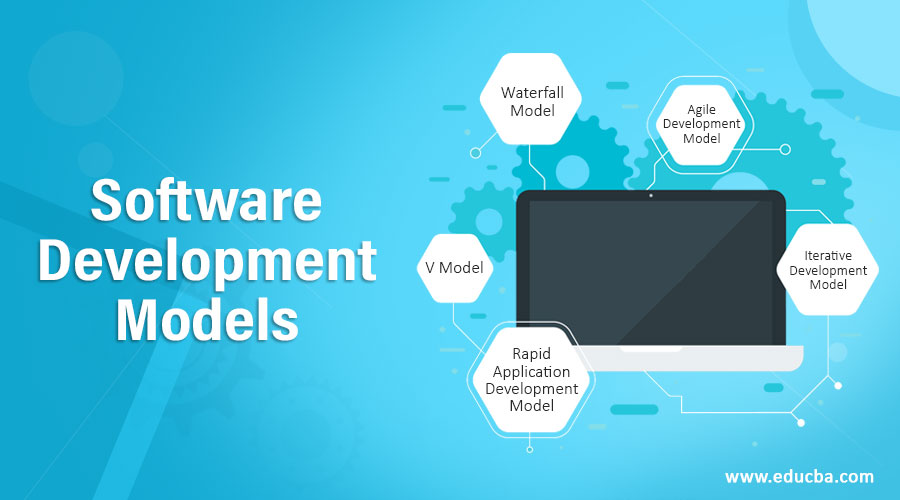Software Development Models | Top 5 Software Development Models

Mục lục bài viết
Introduction to Software Development Models
Software Development models are the models that define the process and the flow in which the project needs be carried out, defines how the software should be developed based on the business and users’ requirements. These models help both developers and testers to develop the project properly. There are various models available, each has its advantages and disadvantages, based on the project, an appropriate model is selected to work on.
Top 5 Software Development Models
Software Development Models that are used during software development are as follows
Start Your Free Software Development Course
Web development, programming languages, Software testing & others
1. Waterfall Model
The waterfall model is a pioneer of the software development life cycle process. It was the first model that is being used during software development. It is divided into various phases where the output of each phase acts as an input for the next phase of the cycle. Before jumping to the next phase, it is mandatory to complete the previous phase, without the completion of the first phase, we cannot move to the next phase. Since the phases of the waterfall model move from the upper level to the lower level like the waterfall come from up to down, it is named as the waterfall model.
The waterfall model works as follows:
- Gather the user requirements where the small to large, all the requirements are noted properly to understand the product requirements from the user
- After user requirements, the system requirements are listed to work with the system
- Based on the requirements, the design has been made for the product
- After the global design the, details design for the product is drawn including the system, hardware, software, etc.
- After design the, the actual implementation of the product starts with the development team of the project
- After the implementation of the product, the testing team test the product as a whole.
2. V Model
V model is a framework that is used to describe the software development lifecycle activities from requirement specifications to maintenance. In the V model, testing activities are integrated into each phase of the software development life cycle.
Test levels used for V model
- Component Testing: It is used to verify the functions of all software components used in the product are working well or not. Each component can be tested separately.
- Integration Testing: It is used to tests the interface between components i.e. interaction with various parts of the system such as file system, operating system, and hardware or interfaces between systems.
- System Testing: It is used to test the system as a whole. it verifies the system or product against the specified requirements.
- Acceptance Testing: It is used to perform validation testing with respect to user need, requirements, and business process conducted to determine whether or not to accept the system
These test levels can be combined and rearranged based on the project. In the V model, validation testing is performed during the earlier stages of the life cycle.
3. Iterative Development Model
The iterative development model is a life cycle where the project is broken down into a large number of iterations, where iteration is a complete development loop resulting in a release of executable products, i.e. a subset of the final product under development, which grown from iteration to iteration yo become the final product. Rapid Application Development, agile development, And Rational Unified Process are examples of the Iterative development models.
4. Rapid Application Development Model
Rapid Application Development is formally a parallel development of functions and subsequent integration. RAD model allows users in the development process to review the product.
RAD works as follows
- Understands the users or organization requirements
- Design the product
- Develop the function and components of the project as a mini part
- Give the small version of the product to the customer or user for daily use.
- Collect the feedback from the user.
Based on the feedback redevelop the other version of the project the process goes on further.
- RAD allows rapid change and development of the product. It allows early validation of technical risks and rapid response to changing customer requirements. In the RAD model, users get the early visibility of the product and can provide feedback on its design and can decide, based on the existing functionality, whether to proceed with the development or not, what functions need to be included in the next delivery of the product. Users can also decide whether to stop the project or not if it not delivering the expected results.
5. Agile Development Model
Agile development is a group of software development methodologies based on iterative incremental development, where requirements and solutions evolve through collaboration between self-organizing cross-functional teams. there is a number of agile methodologies available for use during software development, but Scrum agile methodology and Extreme Programming i.e. XP are the main sources of agile development.
Benefits of agile development
- It focuses on the good quality of the code and its working
- Involve testing at the earlier stages of the life cycle
- Simple in design
- Involve business stakeholders to help the testing team so that testers can test the product based on the specified requirements.
Conclusion
In this article, we have discussed the software development models to understand the relationship between the development phase and the testing phase during development. The use of the development model is based on the project and its requirements, you need to choose what development model should fit for the project.
Recommended Articles
This is a guide to Software Development Models. Here we discuss an introduction to Software Development Models with 5 different models explained in detail. You can also go through our other related articles to learn more –











